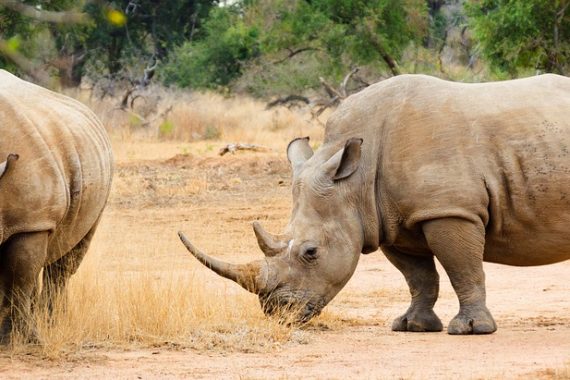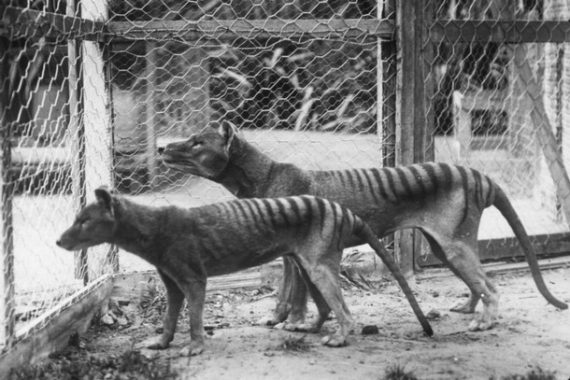Flying Lemur aka Colguo
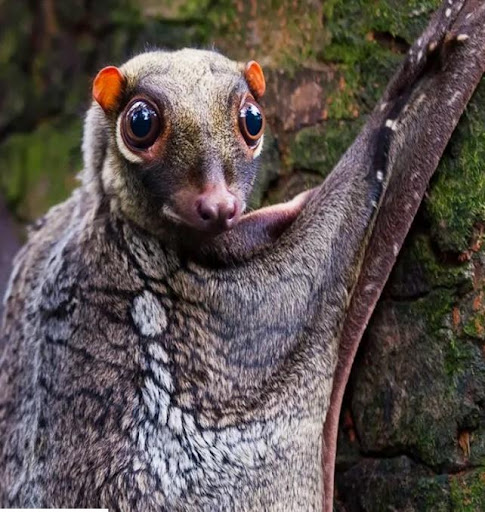
The sunda colugo (Image from https://www.bbc.com/travel/article/20210201-langkawi-the-curious-island-of-the-strange-colugos)
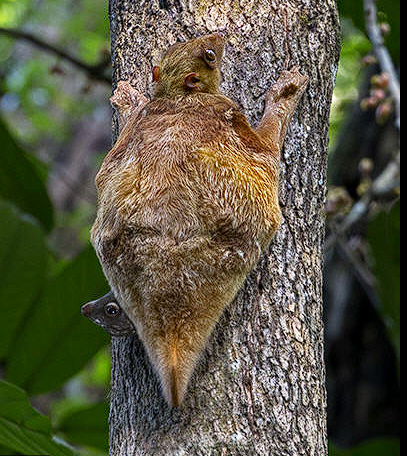
The Malayan colugo (Image from https://www.ecologyasia.com/verts/mammals/colugo.html)
Is it a bird? Is it a plane? No, its just a flying lemur, also known as the colugo. The two species of colugo, the Philippine flying lemur (Cynocephalus volans) and the Sunda flying lemur (Galeopterus variegatus) make up the whole Cynocephalidae family and Dermoptera order. They are found only in Southeast Asia, with the Philippine Lemur inhabiting the southerly Philippine islands of Bohol, Samar and Mindanao and the Sunda Lemur ranging throughout Vietnam, Laos and Cambodia and down into the islands of Sumatra, Borneo and Java.
Colugos were likely to have gone even more ignored if not for the discovery of an evolutionary link between this obscure little corner of the phylogenetic tree and primates. Molecular evidence now indicates that tree shrews, primates, and colugos all cluster together on the same branch of the mammalian family tree. However, despite this link to our closest relatives, colugos remain some of the most understudied mammals. This is partly due to a lack of captured individuals and a nocturnal, cryptic lifestyle, meaning much of their ecology, behaviour and biology is unknown. A study from 2016 tried to answer more of the mysteries around colugos by analysing the DNA of museum samples. They found significant genetic differences between populations from different geographic locations, indicating there may be more than just the two species currently identified.
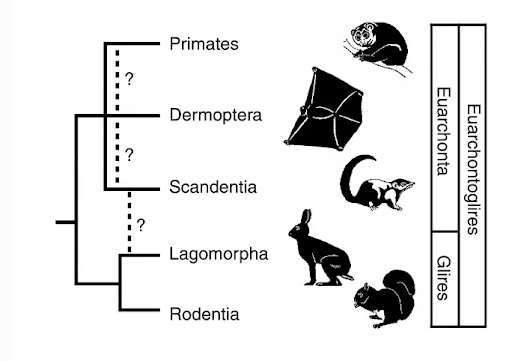
The likely structure of the phylogenetic relationships between primates and the colugos (Dermoptera). (Image from Martin, 2008)
Living the high life: gliding colugos
Although they are called the flying lemur, they in fact cannot fly, and they’re not lemurs! Colugos more closely resemble flying squirrels, although their heads and their predominantly nocturnal lifestyle is probably what gave them the name lemur. They don’t fly but glide from tree to tree in their tropical forest habitat. They live an entirely arboreal lifestyle, using their webbed, clawed feet to clamber around the canopy, although they are not good climbers, but rather progress up the tree in a series of ungainly hops. Their long limbs and tail are connected by a thin membrane, just like bats, called the patagium. This large flap of skin allows them to glide as far as 70m from one tree to the next, with researcher recording one tagged colugo in Singapore travelling 150m in a single glide!
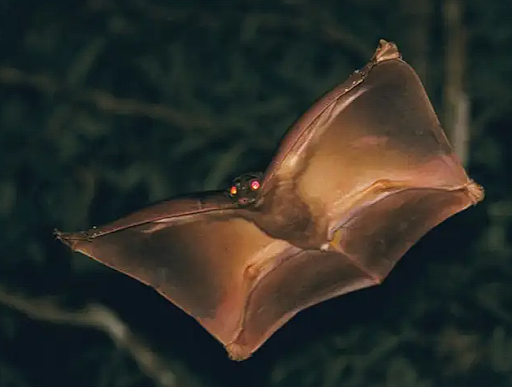
The glorious glide of the colugo (Image from https://www.newscientist.com/article/dn27539-zoologger-the-clumsy-tree-dweller-transforms-into-a-gliding-ace/)
They are herbivorous, eating leaves, fruit, sap, shoots and flowers, with specially adapted stomachs and long intestines to help them efficiently extract nutrients from the tough fibrous material they eat. Colugos have very unusual teeth, with serrated upper incisors and comb like lower incisors that are subdivided into up to 20 tines on each tooth. No one knows exactly why this has evolved, but its likely to do with grooming and foraging behaviours.
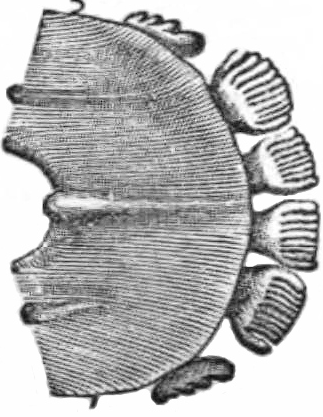
A diagram of the unusual comb like lower incisors of the colugos (Image from Cassell’s Popular Natural History)
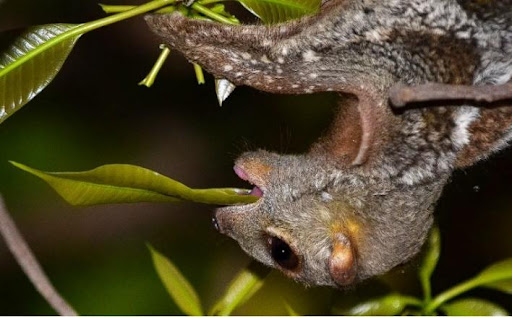
A Malayan colugo foraging on plants whilst hanging from a branch (Image from Priscilla Miard, https://www.bbc.com/travel/article/20210201-langkawi-the-curious-island-of-the-strange-colugos)
Colugos have also evolved the ability to see in the dark. Colugos found dead by locals were donated to the National University of Singapore and their eyes dissected and sectioned so they could be studied under a microscope. They found a high ratio of rod to cone cells in the retina, common to other nocturnal primates. Rod cells are specially adapted photoreceptor cells in the retina that are adapted for vision at low levels. Interestingly though, colugos lack a tapetum lucidum, the specialised reflective membrane in the eyes of many vertebrates that enhance their ability to see at night and what gives many animals, like pet cats, their distinctive eye shine. The retina of the colugo was also found to lack a blood supply system, highly unusual amongst mammals, suggesting the structure found in the colugo is a more primitive version of the mammalian eye.
Recently, colugos have been recorded using ultrasound calls to communicate with each other. The researcher suspected the high frequency sounds they detected were likely to be an alarm call in response to the presence of humans, but further behavioural and ecological studies are needed to understand the different types of calls and what they mean. If the meaning of these calls can be deciphered, it could provide a far less invasive way to study the behaviour of these cryptic mammals, as nocturnal mammals are easily disturbed by visual surveys.
Shrinking forests: the scale of deforestation in Southeast Asia
Currently, the IUCN red list classifies both species of the colugo as least concern, although the Sunda flying lemur population is known to be in decline. Deforestation is the biggest threat to colugos, as they are so reliant on lowland forest, the first habitat to be logged when forest is cleared for human activity, due to its low elevation and therefore easy access. Unfortunately, satellite data has shown that between 2001 and 2019, Southeast Asia has lost 610,000 square metres of rainforest, an area the same size as Thailand. Although conservationists have long been worried about the lost of low elevation forest, research has found that this devastating habitat loss is beginning to creep up into higher elevations, even though crops don’t grow as well under these conditions. Unfortunately, the intense demand for agriculture is driving it into less-than-optimal conditions in a bid to keep up with the pressures of human development. As is frequently the case, much of the tropical rainforest is cleared to make way for palm oil plantations.
Conservation optimism
The issues with deforestation are well understood and although it can seem pretty hopeless, much is being done to try and slow, if not halt completely, the tide of destruction.
The tropical forest alliance was founded at the Rio climate summit in 2012 and is a collaboration between multiple stakeholders aiming to help private companies implement deforestation reduction measures. They work across palm oil, beef, soy and pulp supply chains to try and reduce the environmental impacts of these industries. Check out their website here:
https://www.tropicalforestalliance.org/
The rainforest trust is a US based not for profit that works to save tropical species and their habitat through securing rainforest reserves. To date, they have safeguarded up to 39 million acres of rainforest.
The provide more information about projects they have funded and their successes on their website at https://www.rainforesttrust.org/.
They even have a shop where you can buy rainforest trust approved, eco friendly gifts.
Awesome videos!
References
Byrnes, G. Lim, N.T.L. and Spence, A.J. (2008) ‘Take-off and landing kinetics of a free ranging mammal, the Malayan colugo.’ Proceedings of the Royal Society B, 275
Feng, Y. Ziegler, A.D. Elsen, P.R. Liu, Y. He, X. Spracklen, D.V. Holden, J. Jiang, X. Zheng, C. and Zeng, Z. (2021) ‘Upward expansion and acceleration of forest clearance in the mountains of Southeast Asia.’ Nature Sustainability, 4.
https://www.britannica.com/animal/flying-lemur
https://www.iucnredlist.org/species/41502/10479343
https://www.iucnredlist.org/species/6081/12410826
https://www.bbc.com/travel/article/20210201-langkawi-the-curious-island-of-the-strange-colugos
Janecka, J.E. Miller, W. Pringle, T.H. Wiens, F. Zitzmann, A. Helgen, K.M. Springer, M.S. and Murphy, W.J. (2007) ‘Molecular and genomic data identify the closest living relative of primates.’ Science, 318.
Martin, R.D. (2008) ‘Colugos: obscure mammals glide into the evolutionary limelight.’ Journal of Biology¸ 7(13)
Mason, V.C. Li, G. Minx, P. Schmitz, J. Churakov, G. Doronina, L. Melin, A.D. Dominy, N.J. Lim, N.T.L. Springer, M.S. Wilson, R.K. Warren, W.C. Helgen, K.M. and Murphy, W.J. (2016) ‘Genomic analysis reveals hidden biodiversity within colugos, the sister group to primates.’ Zoological Population Genetics, 2(8).
Moritz, G.L. Lim, N.T.L. Neitz, M. Peichl, L. and Dominy, N.J (2013) ‘Expression and evolution of short wavelength sensitive opsins in colugos: a nocturnal lineage that informs debate on primate origins.’ Evolutionary Biology, 40
Rose, K.D. Walker, A. and Jacobs, L.L. (1981) ‘Function of the mandibular tooth comb in living and extinct mammals.’ Nature, 289


